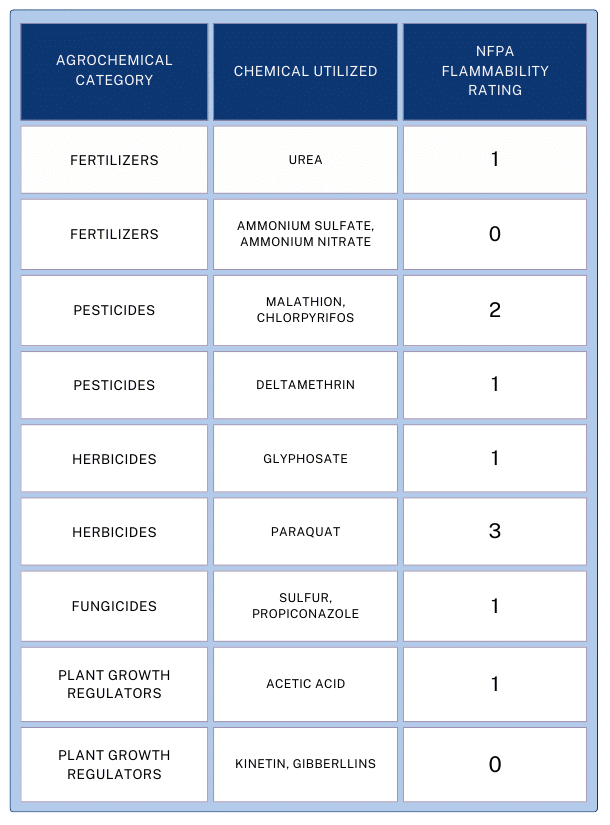Agrochemical Storage & Safety Procedures
Posted on by Mandy Marxen
Key Agrochemical Storage Requirements
1. Ventilation for Safe Storage
Agrochemical storage buildings must include mechanical ventilation systems to eliminate harmful fumes, dust, and gases. Proper ventilation not only protects employees but also ensures the storage atmosphere remains safe. For storing flammable agrochemicals, additional regulations may apply, including fire-rating requirements. Consult your local fire marshal to determine specific compliance needs. For the highest safety standards, fire-rated agrochemical storage buildings allow placement within 10 to 30 feet of occupied facilities or property lines. Learn the about NFPA 30 chapter 14 requirement.2. Understanding Agrichemical Hazard Classifications
Agrochemicals such as pesticides, fertilizers, herbicides, and fungicides are classified based on their hazards, which include flammability, toxicity, corrosiveness, and reactivity. Always reference Material Safety Data Sheets (MSDS) and product labels to identify these classifications. Proper labeling is a legal requirement and crucial for maintaining safety, and familiarity with the NFPA regulations is helpful.
3. Segregating Incompatible Agrochemicals
Many agrochemicals are incompatible with one another and must be stored separately to prevent dangerous chemical reactions. For example, flammable materials should not be stored with oxidizing agents. Use solid partitions or separate agrochemical storage buildings to segregate incompatible substances effectively.4. EPA-Compliant Spill Containment
To comply with EPA spill containment regulations, agrochemical storage buildings must feature a secondary containment sump capable of holding either:- 10% of the total liquid volume stored
- 100% of the largest single container’s volume
